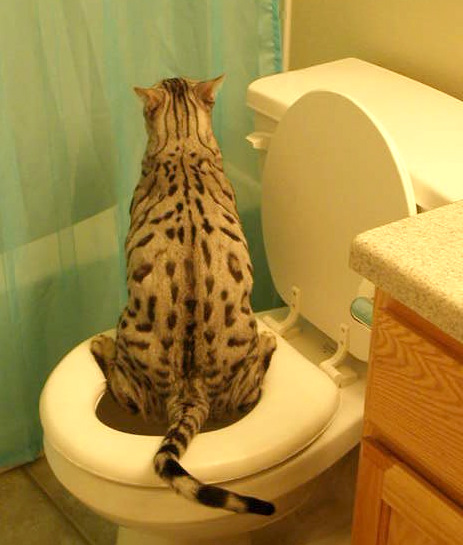We have unearthed the article involving Can You Flush Cat Poo or Litter Down the Toilet? below on the net and accepted it made sense to relate it with you over here.

Introduction
As pet cat proprietors, it's necessary to be mindful of just how we throw away our feline pals' waste. While it may appear practical to flush pet cat poop down the commode, this method can have detrimental effects for both the atmosphere and human health.
Alternatives to Flushing
Luckily, there are safer and extra accountable ways to throw away cat poop. Take into consideration the adhering to options:
1. Scoop and Dispose in Trash
One of the most typical approach of throwing away cat poop is to scoop it right into a biodegradable bag and toss it in the garbage. Make sure to make use of a devoted litter inside story and deal with the waste without delay.
2. Use Biodegradable Litter
Select biodegradable feline clutter made from materials such as corn or wheat. These trashes are eco-friendly and can be safely taken care of in the garbage.
3. Bury in the Yard
If you have a lawn, take into consideration burying feline waste in a marked area away from veggie yards and water sources. Make sure to dig deep adequate to avoid contamination of groundwater.
4. Mount a Pet Waste Disposal System
Invest in an animal garbage disposal system especially designed for feline waste. These systems make use of enzymes to break down the waste, reducing odor and environmental effect.
Wellness Risks
Along with environmental issues, purging cat waste can additionally pose health and wellness threats to human beings. Pet cat feces might have Toxoplasma gondii, a parasite that can create toxoplasmosis-- a potentially serious illness, particularly for expectant ladies and individuals with damaged body immune systems.
Ecological Impact
Purging cat poop introduces damaging virus and bloodsuckers right into the water system, posturing a significant risk to aquatic communities. These contaminants can negatively impact marine life and compromise water quality.
Conclusion
Responsible pet possession expands past giving food and sanctuary-- it also involves proper waste monitoring. By refraining from flushing cat poop down the toilet and choosing alternate disposal techniques, we can lessen our ecological footprint and safeguard human health.
Why Can’t I Flush Cat Poop?
It Spreads a Parasite
Cats are frequently infected with a parasite called toxoplasma gondii. The parasite causes an infection called toxoplasmosis. It is usually harmless to cats. The parasite only uses cat poop as a host for its eggs. Otherwise, the cat’s immune system usually keeps the infection at low enough levels to maintain its own health. But it does not stop the develop of eggs. These eggs are tiny and surprisingly tough. They may survive for a year before they begin to grow. But that’s the problem.
Our wastewater system is not designed to deal with toxoplasmosis eggs. Instead, most eggs will flush from your toilet into sewers and wastewater management plants. After the sewage is treated for many other harmful things in it, it is typically released into local rivers, lakes, or oceans. Here, the toxoplasmosis eggs can find new hosts, including starfish, crabs, otters, and many other wildlife. For many, this is a significant risk to their health. Toxoplasmosis can also end up infecting water sources that are important for agriculture, which means our deer, pigs, and sheep can get infected too.
Is There Risk to Humans?
There can be a risk to human life from flushing cat poop down the toilet. If you do so, the parasites from your cat’s poop can end up in shellfish, game animals, or livestock. If this meat is then served raw or undercooked, the people who eat it can get sick.
In fact, according to the CDC, 40 million people in the United States are infected with toxoplasma gondii. They get it from exposure to infected seafood, or from some kind of cat poop contamination, like drinking from a stream that is contaminated or touching anything that has come into contact with cat poop. That includes just cleaning a cat litter box.
Most people who get infected with these parasites will not develop any symptoms. However, for pregnant women or for those with compromised immune systems, the parasite can cause severe health problems.
How to Handle Cat Poop
The best way to handle cat poop is actually to clean the box more often. The eggs that the parasite sheds will not become active until one to five days after the cat poops. That means that if you clean daily, you’re much less likely to come into direct contact with infectious eggs.
That said, always dispose of cat poop in the garbage and not down the toilet. Wash your hands before and after you clean the litter box, and bring the bag of poop right outside to your garbage bins.
https://trenchlesssolutionsusa.com/why-cant-i-flush-cat-poop/

Hopefully you enjoyed our topic on How to Dispose of Cat Poop and Litter Without Plastic Bags. Thanks for taking time to read our article post. Appreciated our blog? Please share it. Let another person discover it. I treasure reading our article about How to Dispose of Cat Poop and Litter Without Plastic Bags.
Schedule